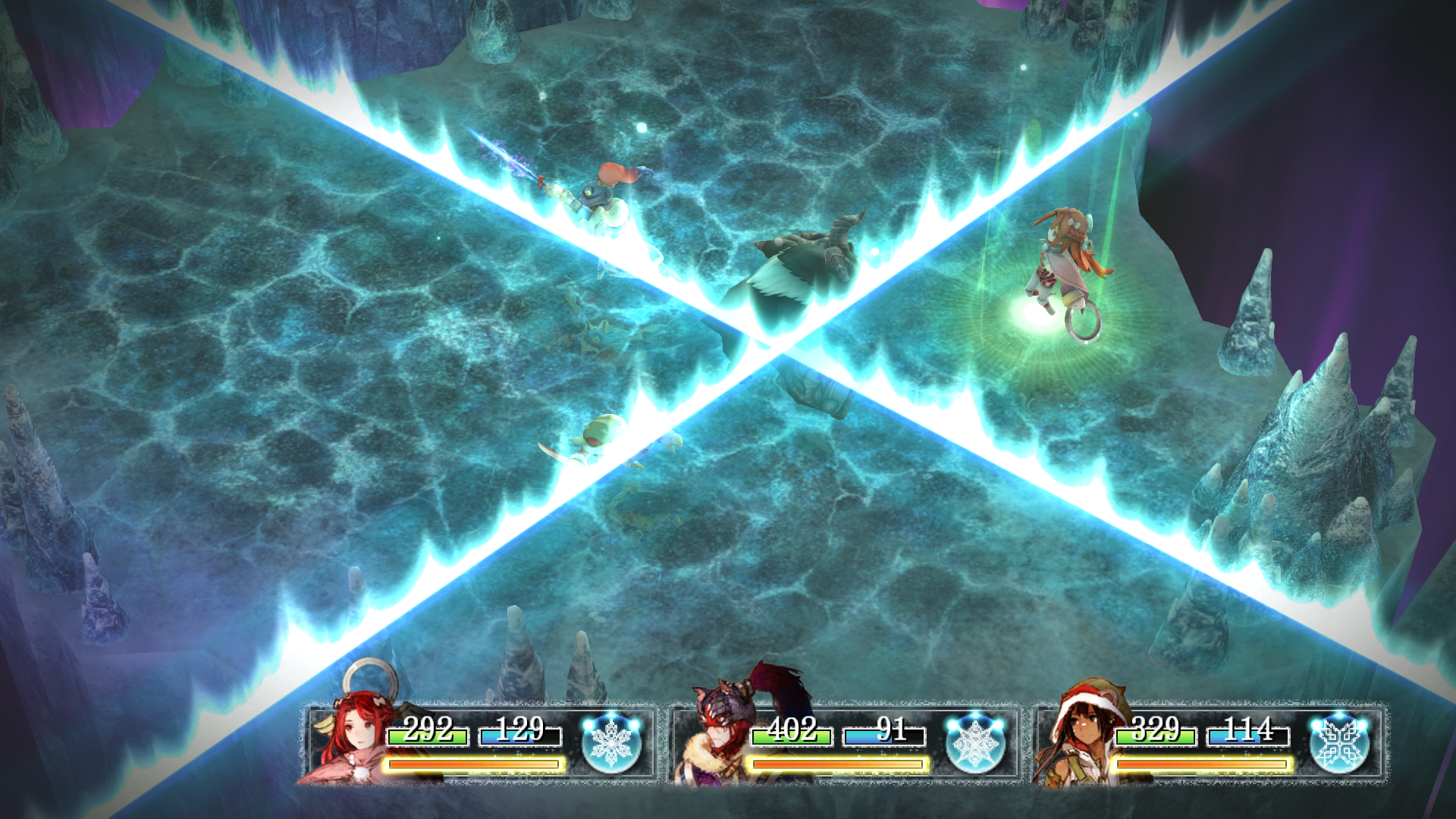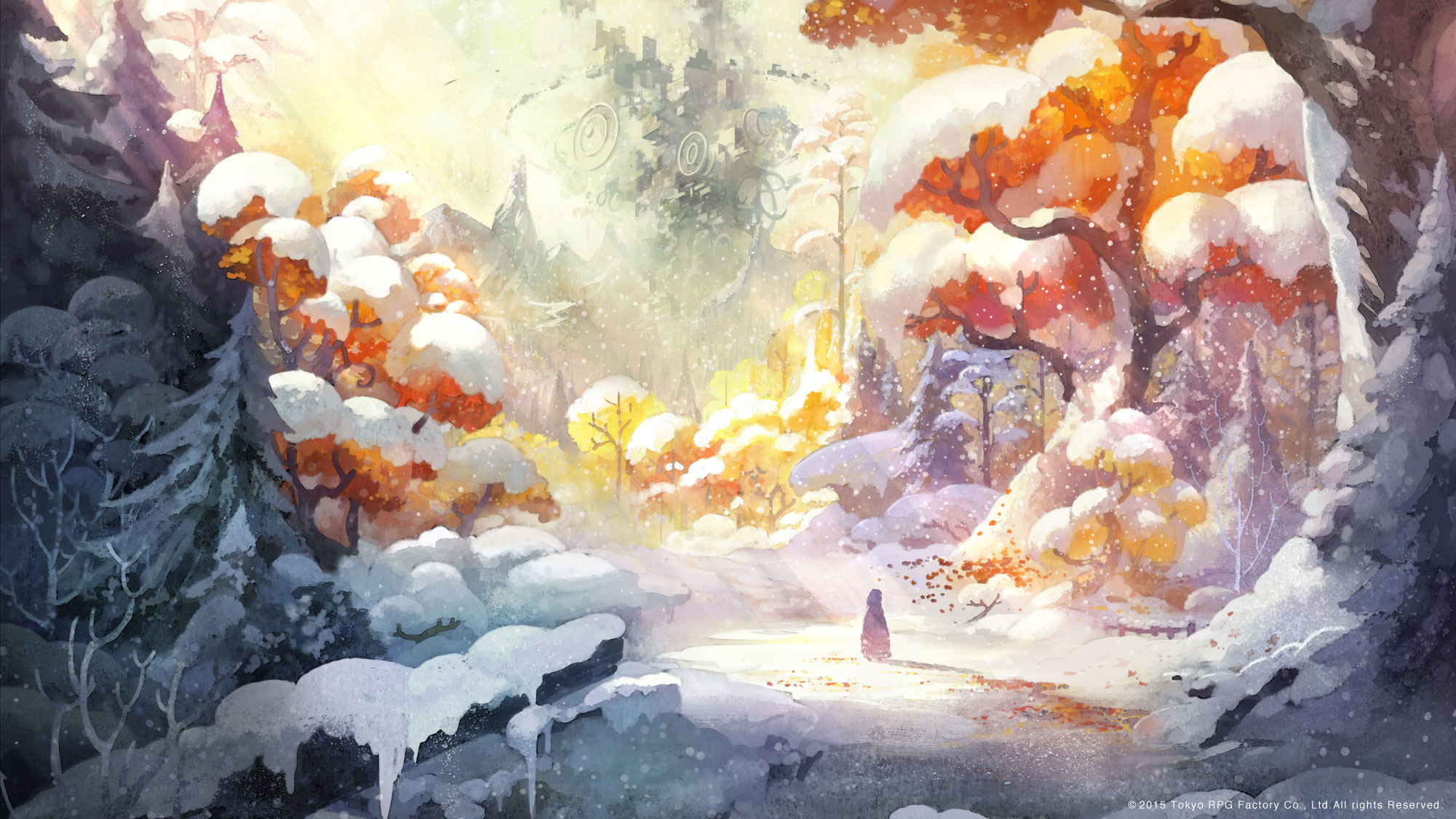I AM SETSUNA is heading overseas this summer for PlayStation 4 and Steam, but we thought we’d share a bit of the import version to whet your appetite. Known in Japan as Ikenie to Yuki no Setsuna, it marks the first title for Square Enix’s new Tokyo RPG Factory studio.
“Who are these folks”, you ask? Fans of a “bygone” era of role-playing games that aim to bring about their return. Just take a look at their official website statements:
“Countless adventures captivated us when we were kids. Now, it’s time for us to return the favor.”
“Everyone fell in love with the RPGs of yesteryear.”
Much like Silicon Studio’s Bravely Default was to Final Fantasy V, Tokyo RPG Factory’s first title is nothing short of a love letter to Chrono Trigger, considered one of Square’s finest games from the 16-bit era.
We play through the first thirty minutes starting from the title screen:
Much of Chrono Trigger is at work here in Setsuna. A world map connects areas like dungeons and towns, which use a top-down perspective. A party of three (chosen from a pool of seven unlockable characters) composes your battle party, and Active Time Battle makes a return. Time is represented by an orange gauge for each character, and when it fills, you can act. Dual techs and triple techs are also present, which are powerful abilities that can be used when multiple characters are able to act.
Where Setsuna diverges is the titular “Setsuna” gauge. By equipping certain accessories, you’ll be able to modify your abilities and attributes when when the Setsuna gauge fills to certain points – visually represented by nodes of light. Actions in battle will gradually fill this gauge, so it’s important to keep an eye on this mechanic in order to suitably advantage yourself.
I Am Setsuna steeps itself in a snow-draped sadness, a setting I’m all too familiar with in the northern Minnesotan wastes. While the combined meanings derived of the Japanese word “setsuna” don’t really have a bite-sized English parallel, anyone who’s had a solitary crunch through softly-falling snow on a dim winter’s day might catch a whiff of similar feelings.
Fitting, that a seemingly ceaseless winterscape set with only piano arrangements serves as the game’s setting. It’s quite beautiful. The voice acting is very light, only punctuating battle as grunts and victory quotes. I actually felt compelled to keep them turned off to highlight the quietude the game wants to project. Maybe you’ll disagree.
There isn’t merely momentary and melancholic ennui going on in a game themed around sadness. It’s a game exploring a moment in time – nostalgia.  While we overuse nostalgia as word describing a simple, fond remembrance, we forget the flip side of the coin. Nostalgia also describes the pain of something that can never again be, perhaps for understandable reasons.
While we overuse nostalgia as word describing a simple, fond remembrance, we forget the flip side of the coin. Nostalgia also describes the pain of something that can never again be, perhaps for understandable reasons.
Setsuna looks to be a lovely throwback, it remains to be seen if the game can stand on its own strengths – rather than in the shadow of another. Will it be a clarion call that these classic games and classic styles can live again with new-found potency? Or, will it be a reminder that – while enjoyed – some games are too attached to the eras from which they belong?
Look forward to our review when the English version arrives this summer.

Recent Comments